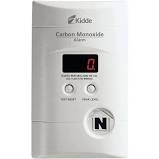What is carbon monoxide?

What is Carbon Monoxide?
Facts and Figures
- 480 U.S. residents died between 2001 and 2003 from non-fire-related carbon-monoxide poisoning.
- Most CO exposures occur during the winter months, especially in December (including 56 deaths, and 2,157 non-fatal exposures), and in January (including 69 deaths and 2,511 non-fatal exposures). The peak time of day for CO exposure is between 6 and 10 p.m.
- Many experts believe that CO poisoning statistics understate the problem. Because the symptoms of CO poisoning mimic a range of common health ailments, it is likely that a large number of mild to mid-level exposures are never identified, diagnosed, or accounted for in any way in carbon monoxide statistics.
- Out of all reported non-fire carbon-monoxide incidents, 89% or almost nine out of 10 of them take place in a home.
Physiology of Carbon Monoxide Poisoning
When CO is inhaled, it displaces the oxygen and effectively suffocates the body. CO can poison slowly over a period of several hours, even in low concentrations. Sensitive organs, such as the brain, heart and lungs, suffer the most from a lack of oxygen.
Recommendations
Scott Price, CPI, #1532
Certified Master Inspector
Home Run Inspections
405-905-9175, 850-203-3239
Info@HomeRunInspections.com
We cover all of the bases!
Serving the Oklahoma City metro and surrounding areas including Edmond, Yukon, Moore, Norman, Midwest City/Del City, Bethany, El Reno, Shawnee, Harrah, and more.
Also Now Serving the Florida Panhandle metro areas including Destin, Fort Walton Beach, Okaloosa Island, Miramar Beach, Santa Rosa Beach, Niceville, Shalimar, Freeport, Crestview, and more.
Schedule Inspections Online at:
Follow us on
Like us on FaceBook
Follow us on Twitter
Follow us on Instagram: Instagram

